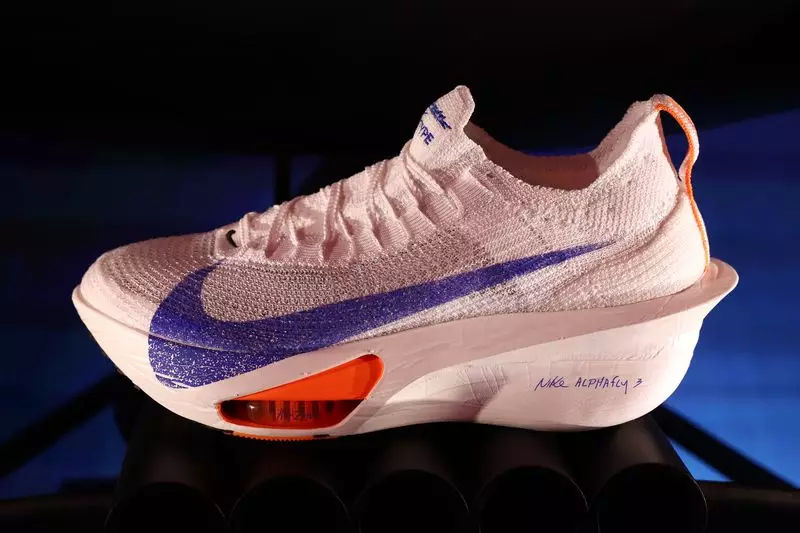In the competitive landscape of sportswear, Nike has long been considered a titan. However, recent developments have painted a picture of struggle and re-evaluation. After a quarterly earnings report that exceeded analysts’ estimates, Nike’s share price fluctuations have captured attention, revealing deeper concerns about its market positioning and strategies. This article delves into Nike’s latest forecasts, the leadership shift with new CEO Elliott Hill, and the critical decisions that lie ahead for a company battling to reclaim its former glory.
On Thursday, Nike released its second-quarter earnings report showcasing a complex narrative. While the company posted earnings per share (EPS) of 78 cents—significantly higher than the anticipated 63 cents—net revenue fell by 7.7% to $12.35 billion. This decline was less severe than the forecasted 9.41%, suggesting that although the company is in a challenging phase, it has managed to perform slightly better than anticipated amidst various struggles. The initial response to the earnings report drove Nike shares up by 11%. However, this surge was short-lived as the forecast for the third quarter caused investors to retreat, highlighting the discrepancies between immediate market performance and long-term sustainability.
Nike’s prediction of low double-digit revenue declines signals potential hardships on the horizon. Market analysts had anticipated a lesser drop, averaging a 7.65% decrease. The discrepancy here raises questions about the company’s overall strategy and execution moving forward. New CEO Elliott Hill emphasized that while efforts to regain market share are underway, they will inevitably involve short-term discomfort. It is crucial for investors and stakeholders to understand that Nike’s path to revitalization is characterized by strategic shifts that may not yield immediate results.
Elliott Hill’s ascension to the CEO position marks a pivotal moment for Nike. Having interned with the company back in 1988, Hill’s deep-rooted experience is both an asset and a challenge. His commitment to restoring Nike’s focus on sports is promising, reflecting a critical need to reconnect with its customer base. Acknowledging that the brand has “lost its obsession with sport,” Hill aims to shift focus towards selling items at premium prices, intending to foster a more exclusive brand identity. However, such transformations take time; a luxury that companies rarely possess in swiftly changing markets.
In his initial earnings call, Hill expressed a strategic priority regarding Nike’s retail partnerships and its overly promotional strategies. Excessive markdowns have not only undercut brand prestige but have also jeopardized relationships with retail partners. Hill’s insistence on rebuilding these crucial alliances and limiting discounts underlines a meaningful attempt to reinforce brand integrity. As he noted, cultivating “emotional consumer connections” is essential for Nike’s recovery. This approach not only aims to improve brand perception but can also enhance the profitability of retail partners, fostering a more sustainable ecosystem.
Nike’s competitive edge is increasingly under threat from rival brands that are introducing innovative products with improved comfort and cushioning. In a response to this market threat, Nike is ramping up investment in new products like the Air Max 95 and bolstering established franchises such as Jordans and Pegasus. The decision to focus on core running franchises reflects a strategic pivot that aims to attract a discerning customer base. By launching diverse iterations of these shoes at varying price points, the company hopes to cater to a wider demographic and reassert its dominance in the athletic footwear market.
Navigating through a tumultuous market requires strategic foresight, and Nike is at a crucial juncture. With a newly appointed CEO steering the ship, the future of this iconic brand hinges on its ability to balance recovery with sustainable growth. Building genuine connections with consumers, revitalizing retail partnerships, and innovating product offerings will be pivotal. Despite immediate uncertainties, Nike stands on the edge of potential resurgence—a journey that will undoubtedly be watched keenly by investors and competitors alike. In the sportswear arena, the true measure of success lies in resilience and adaptation; it remains to be seen whether Nike can reclaim its position as a leader in the industry.

